Inside The New York Botanical Garden
Posted in NYBG in the News on May 26 2008, by Plant Talk
Henry Moore is here! Moore in America: Monumental Sculpture at The New York Botanical Garden opened to the public on Saturday, and the weather couldn’t have been nicer. Plenty of Memorial Day revelers took in the sun and the sights of Henry Moore’s sculpture across the Garden. Plenty of people are taking notice, with many naming Moore in America one of summer’s hottest tickets, like:
Time Out New York, which listed Moore in America as the “best by day” for Saturday. In their write-up reviewer Dan Avery says, “How fortunate, then, that these works of art are in an environment that is itself a work of art.” Thanks, Dan!
Read More
Posted in Exhibitions, Moore in America, Programs and Events on May 23 2008, by Plant Talk
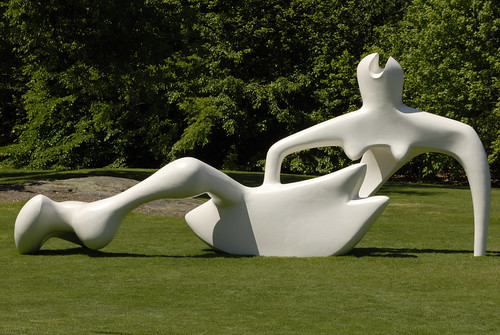 The Garden’s newest exhibition, Moore in America, opens to the public this Memorial Day weekend. The weather is slated to be amazing, so there are no excuses not to enjoy the sunshine and the majestic works of Henry Moore. And don’t forget about Darwin’s Garden, either. From his garden re-created in our own Enid A. Haupt Conservatory to a selection of original texts and artwork in our library, experience Darwin as never before. This weekend offers guests an extra day to get in on the fun as Monday is a holiday. From films to children’s programming to a slew of guided tours, this weekend looks to be the busiest yet. Check out the full list after the jump.
The Garden’s newest exhibition, Moore in America, opens to the public this Memorial Day weekend. The weather is slated to be amazing, so there are no excuses not to enjoy the sunshine and the majestic works of Henry Moore. And don’t forget about Darwin’s Garden, either. From his garden re-created in our own Enid A. Haupt Conservatory to a selection of original texts and artwork in our library, experience Darwin as never before. This weekend offers guests an extra day to get in on the fun as Monday is a holiday. From films to children’s programming to a slew of guided tours, this weekend looks to be the busiest yet. Check out the full list after the jump.
Read More
Posted in People on May 21 2008, by Plant Talk

Every few weeks an employee or friend of the Garden takes a quick stroll around the lush 250-acre grounds and writes down his or her thoughts. This week, Annie Novak, coordinator of the Children’s Gardening Program at The New York Botanical Garden, took time to discuss one of her ickier interests: worms! 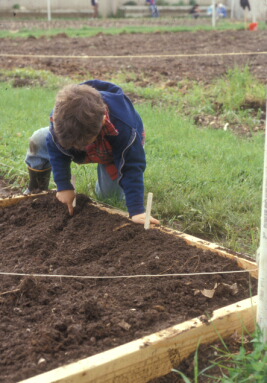
Young gardeners visiting the Ruth Rea Howell Family Garden during the first warm weeks of spring are often delighted by the return of the red-breasted American robin. Watching the birds hop from plot to plot early this morning, I was reminded of another, more secretive, Garden inhabitant, whom we only see when we turn the earth with our trowels. If an acre of land is said to contain about a million worms, we can hardly start our gardening season without acknowledging the invaluable work red wrigglers and earthworms contribute to our healthy beds. Thanks to their digging and digesting, the soil turns loose and dark in our hands as we put seeds into the earth. Without worms to help us break down our lunch scraps, we wouldn’t have the rich dirt in which to grow more lunch!
Read More
Posted in Gardening Tips on May 20 2008, by Sonia Uyterhoeven
Cabbage Worms
 Sonia Uyterhoeven is Gardener for Public Education at The New York Botanical Garden.
Sonia Uyterhoeven is Gardener for Public Education at The New York Botanical Garden.
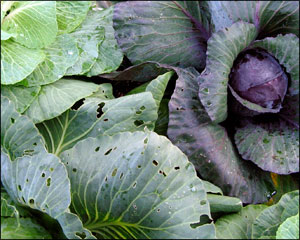 Cabbages make an excellent early season crop. Plant them in early to mid April and you will have a nice harvest by mid-June. Sometime in May you may see a pretty little white butterfly hovering around your cabbages, and shortly thereafter you will notice some holes appearing in your leaves until the beautiful, glaucous foliage looks more like Swiss cheese. You have cabbage worms. The easiest way to control this problem is to send your kids out and have them handpick the small green caterpillars (the culprits for all the holes).
Cabbages make an excellent early season crop. Plant them in early to mid April and you will have a nice harvest by mid-June. Sometime in May you may see a pretty little white butterfly hovering around your cabbages, and shortly thereafter you will notice some holes appearing in your leaves until the beautiful, glaucous foliage looks more like Swiss cheese. You have cabbage worms. The easiest way to control this problem is to send your kids out and have them handpick the small green caterpillars (the culprits for all the holes).
Read More
Posted in NYBG in the News on May 19 2008, by Plant Talk
Here Comes Henry Moore!
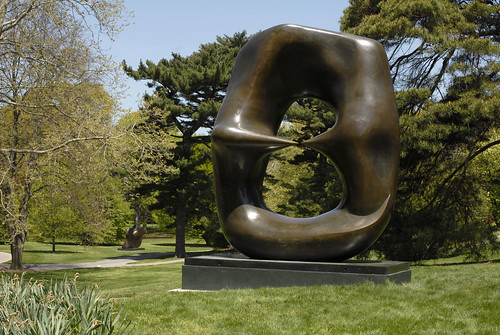 While the official media day for the upcoming exhibit, Moore in America, isn’t until tomorrow, swarms of reporters have already descended on the Garden. And why not? The exhibition boasts the largest outdoor collection of Henry Moore sculpture ever presented in a single venue in the United States.
While the official media day for the upcoming exhibit, Moore in America, isn’t until tomorrow, swarms of reporters have already descended on the Garden. And why not? The exhibition boasts the largest outdoor collection of Henry Moore sculpture ever presented in a single venue in the United States.
That doesn’t mean Darwin’s Garden: An Evolutionary Adventure isn’t getting any love. On the contrary, tomorrow night (Tuesday, May 20, at 10:30 p.m.) the New York PBS affiliate, WNET Thirteen, will feature a special behind-the-scenes tour of Darwin’s Garden on their program New York Voices. Not only will it be educational AND entertaining, but you can win free tickets to the exhibition. Nice!
Read More
Posted in Programs and Events on May 16 2008, by Plant Talk
 Now that all the nasty weather is behind us (for now), we can get back to the task at hand: enjoying spring. The Garden has another full plate of weekend programming to whet your appetite for the flavors of the season. From a wildlife-laden bird walk to a home gardening demonstration to kids’ classes to Darwin programming and much more!
Now that all the nasty weather is behind us (for now), we can get back to the task at hand: enjoying spring. The Garden has another full plate of weekend programming to whet your appetite for the flavors of the season. From a wildlife-laden bird walk to a home gardening demonstration to kids’ classes to Darwin programming and much more!
And don’t forget about our Greening the Garden: Climate Change and Sustainability at the Garden cell phone tour. Walk around the grounds and learn how Garden research contributes to the study of climate change and what the Garden is doing to mitigate its effects. Call 718.362.9561. Enter a prompt number followed by the # key. Enter another number at any time.
Check out the full list of programs after the jump.
Read More
Posted in Darwin's Garden, Exhibitions on May 15 2008, by Plant Talk
 As part of the Charles Darwin exhibition currently featured at The New York Botanical Garden, a special two-part symposium, Darwin: 21st-Century Perspectives, was hosted by NYBG and the American Museum of Natural History. The event was was open to the public and covered many facets of Darwin’s legacy and its implications on science and society. The event was a big success, and many people came to hear the distinguished lineup wax philosophical on one of the greatest scientific minds of the modern era.
As part of the Charles Darwin exhibition currently featured at The New York Botanical Garden, a special two-part symposium, Darwin: 21st-Century Perspectives, was hosted by NYBG and the American Museum of Natural History. The event was was open to the public and covered many facets of Darwin’s legacy and its implications on science and society. The event was a big success, and many people came to hear the distinguished lineup wax philosophical on one of the greatest scientific minds of the modern era.
Read More
Posted in People on May 14 2008, by Plant Talk
Every few weeks an employee or friend of the Garden takes a quick stroll around the lush 250-acre grounds and writes down his or her thoughts. This week, Debbie Becker, who leads bird walks at The New York Botanical Garden, took time to discuss her passion: bird watching. Debbie leads a free bird walk every Saturday at the Garden from 11 a.m. to 12:30 p.m. 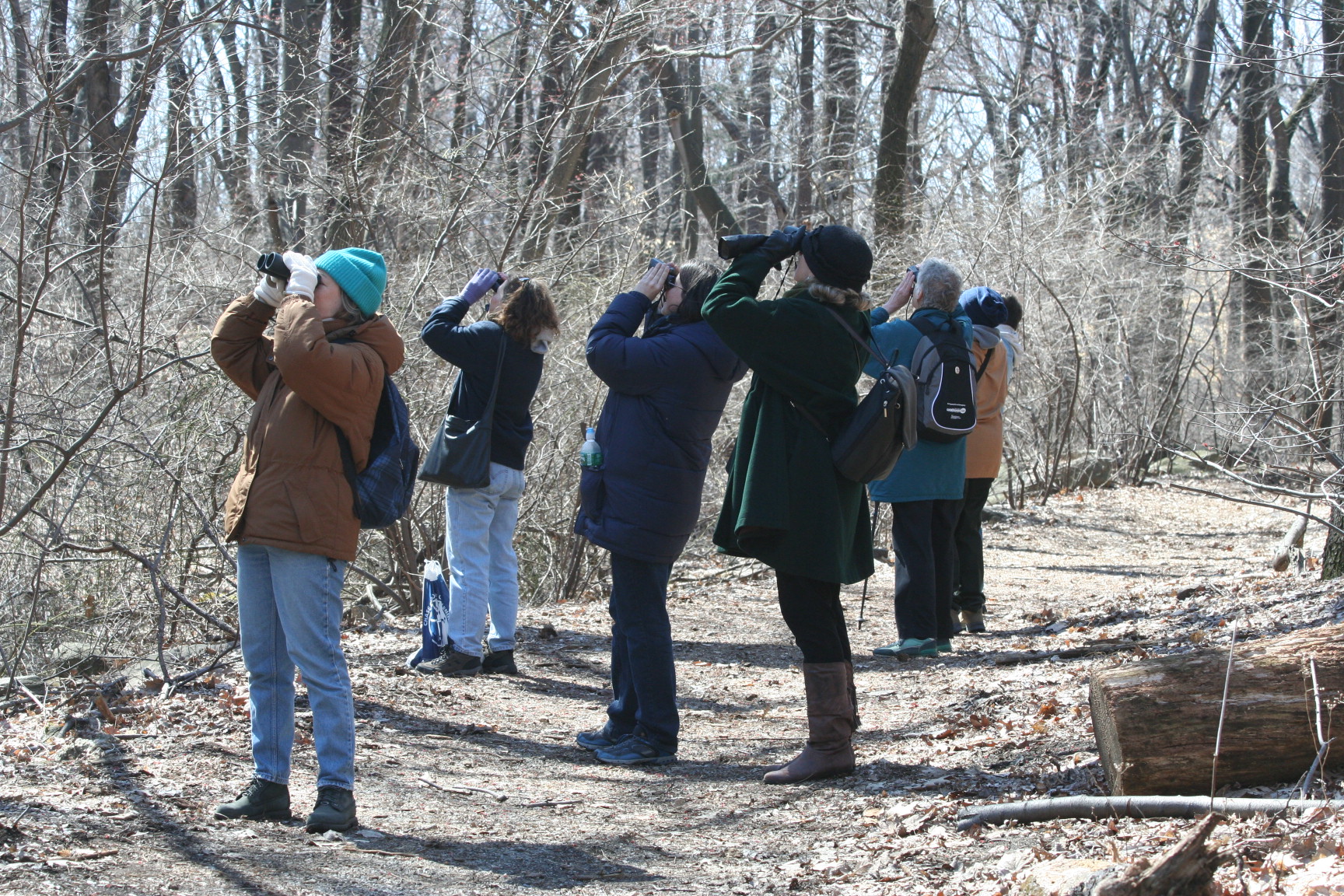
Birding is a contagious passion for many. Once bitten by the birding bug, it is hard to find a cure.
Different seasons bring different birds, but birders always remain the same. I can tell when I start my walk who is there for the glory, who is there for the guts, and who is looking for their life bird. Birders who bird for their life list are an anxious bunch—you can see it in their eyes, their unfamiliarity with the Garden’s grounds, all they really want is their life bird. They know I know and yet the simple formality of introduction is often prolonged as I can see their eyes growing larger as I mention the birds we may see on the walk today. When I get to their bird of prey (so to speak), it is as if a light ignites in their brains and washes their entire being in glory. I know the feeling.
Great-horned owls are a treat for even those who have been coerced into birding that day. GHOs are large—no binoculars needed—and provoke the spookiness in us all. The owls are always the first request on any bird walk. This year we had nesting GHOs that produced two chicks. You would think there was a religious happening in the woods as people came from far and near to pay their respect, gasp, and smile at the sight of the female GHO on her nest. (The male, who is usually quite social, has not made much of an appearance this time around—camera shy, I suppose.) The pilgrimage to the owls is a short walk, but for those who are anxious, they will run ahead of me, looking back to make sure I am coming. Again, they know I know. We are, after all, birders. It runs through our blood the quest for the life bird, the good bird, and the really good bird. We are the Peeping Toms of the forest, meadow, and shore, always hoping for a really good look.
Posted in Gardening Tips on May 13 2008, by Sonia Uyterhoeven
Tomato Time
 Sonia Uyterhoeven is Gardener for Public Education at The New York Botanical Garden
Sonia Uyterhoeven is Gardener for Public Education at The New York Botanical Garden
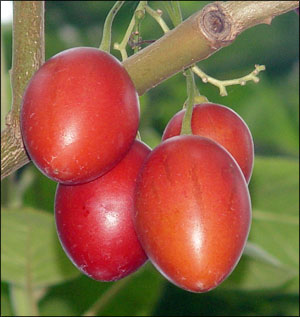 I love growing tomatoes; they are easy, tasty, and fun. One year I had a friend who started heirloom varieties from seed. She gave her leftover seedlings to any willing recipient—and I was one of them. I had a small community plot at that time, and I waited with anticipation for the large heirlooms to ripen. The day before I was planning on picking a prized tomato, a woodchuck paid a visit to the garden and took just one big bite out of the tomato.
I love growing tomatoes; they are easy, tasty, and fun. One year I had a friend who started heirloom varieties from seed. She gave her leftover seedlings to any willing recipient—and I was one of them. I had a small community plot at that time, and I waited with anticipation for the large heirlooms to ripen. The day before I was planning on picking a prized tomato, a woodchuck paid a visit to the garden and took just one big bite out of the tomato.
Heirlooms are wonderful—they are some of the tastiest tomatoes available. However, some of the modern hybrids tend to be more disease resistant and more prolific, so I try and make a habit of including some of each in my garden.
Last year, not by choice, I experimented with growing tomatoes in an area that didn’t receive enough sunlight. The result was a beautiful crop of green beefsteak tomatoes that I dipped in an egg and breadcrumb batter. The fried green tomatoes were so good that I am tempted to grow them in the same spot this year!
This year I plan on experimenting with Earthboxes and other self-watering containers. A few rules with tomatoes: plant them deep (place part of the stem underground and it will produce a beautiful, strong root system), give them sun (the more you can give them, the happier they will be), and keep them well-watered (consistency is the key).
Posted in NYBG in the News on May 12 2008, by Plant Talk
Millions and Billions of Trees. . .
The Associated Press covered the Garden’s TreeBOL project to collect DNA samples of every tree on the planet. The article featured a photo of Dr. James Miller, Dean and Vice President for Science at The New York Botanical Garden, and quotes by Garden scientist Dr. Damon Little and Board Member Thomas Lovejoy.
The New York Times’ City Room Blog referenced Jessica Arcate, the Garden’s Curator of Woody Plants, in a discussion about the Million TreesNYC program that the Garden is participating in. Last month, the Garden, with help from 250 volunteers from St. John’s University, planted 500 trees as part of the program, designed to create the first environmentally sustainable, 21st-century city on Earth.
Antiques and Arts Weekly is getting excited about the next major exhibition at the Garden, Moore in America. The weekly publication, covering the antiques and arts trade, discusses the upcoming sculpture exhibition and features three nice photographs.
The New York Times Science Q&A reached out to the Garden’s Marc Hachadourian, Curator of Glasshouse Collections, to ask him a question about the longevity of amaryllis orchids. Marc offered some easy orchid care tips as well as recommendations on which type of amaryllis is for you.
Bellewood Gardens, the Web site of Garden consultant and popular instructor Judy Glattstein, featured Darwin’s Garden: An Evolutionary Adventure on the site. In a lush, photo-laden post, Judy detailed the blossoming cherry trees and tulips as well as the Darwin exhibition. Described as The New York Botanical Garden’s maven of geophytes (the rubric that encompasses “bulbous, tuberous, cormous, and rhizomatous plants”), she is an award-winning author on water gardening, shade gardening, bulbs, and more. Her latest garden book is Bulbs for Garden Habitats, published by Timber Press in 2005.





 Cabbages make an excellent early season crop. Plant them in early to mid April and you will have a nice harvest by mid-June. Sometime in May you may see a pretty little white butterfly hovering around your cabbages, and shortly thereafter you will notice some holes appearing in your leaves until the beautiful, glaucous foliage looks more like Swiss cheese. You have cabbage worms. The easiest way to control this problem is to send your kids out and have them handpick the small green caterpillars (the culprits for all the holes).
Cabbages make an excellent early season crop. Plant them in early to mid April and you will have a nice harvest by mid-June. Sometime in May you may see a pretty little white butterfly hovering around your cabbages, and shortly thereafter you will notice some holes appearing in your leaves until the beautiful, glaucous foliage looks more like Swiss cheese. You have cabbage worms. The easiest way to control this problem is to send your kids out and have them handpick the small green caterpillars (the culprits for all the holes).



 I love growing tomatoes; they are easy, tasty, and fun. One year I had a friend who started heirloom varieties from seed. She gave her leftover seedlings to any willing recipient—and I was one of them. I had a small community plot at that time, and I waited with anticipation for the large heirlooms to ripen. The day before I was planning on picking a prized tomato, a woodchuck paid a visit to the garden and took just one big bite out of the tomato.
I love growing tomatoes; they are easy, tasty, and fun. One year I had a friend who started heirloom varieties from seed. She gave her leftover seedlings to any willing recipient—and I was one of them. I had a small community plot at that time, and I waited with anticipation for the large heirlooms to ripen. The day before I was planning on picking a prized tomato, a woodchuck paid a visit to the garden and took just one big bite out of the tomato.